The system shown in figure is in equilibrium. Surface PQ of wedge A, having mass M, is horizontal. Block B, having mass 2M, rests on wedge A and is supported by a vertical spring. The spring balance S is showing a reading of √2 Mg. There is no friction anywhere and the thread QS is parallel to the incline surface. The thread QS is cut. Find the acceleration of A and the normal contact force between A and B immediately after the thread is cut.
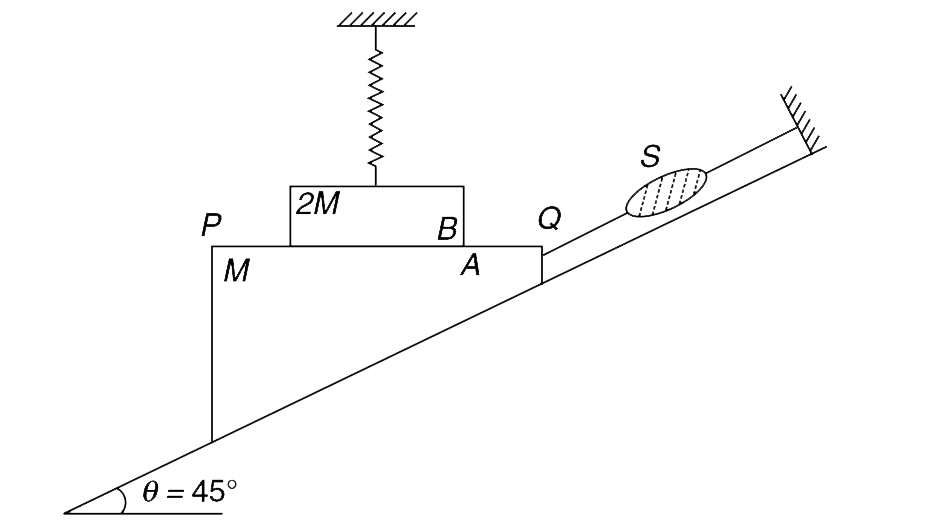
The correct Answer is:a=g√2;NAB=0
Topper's Solved these Questions
Similar Questions
Knowledge Check
In the system shown, the initial acceleration of the wedge of mass 5M is (there is no friction anywhere)
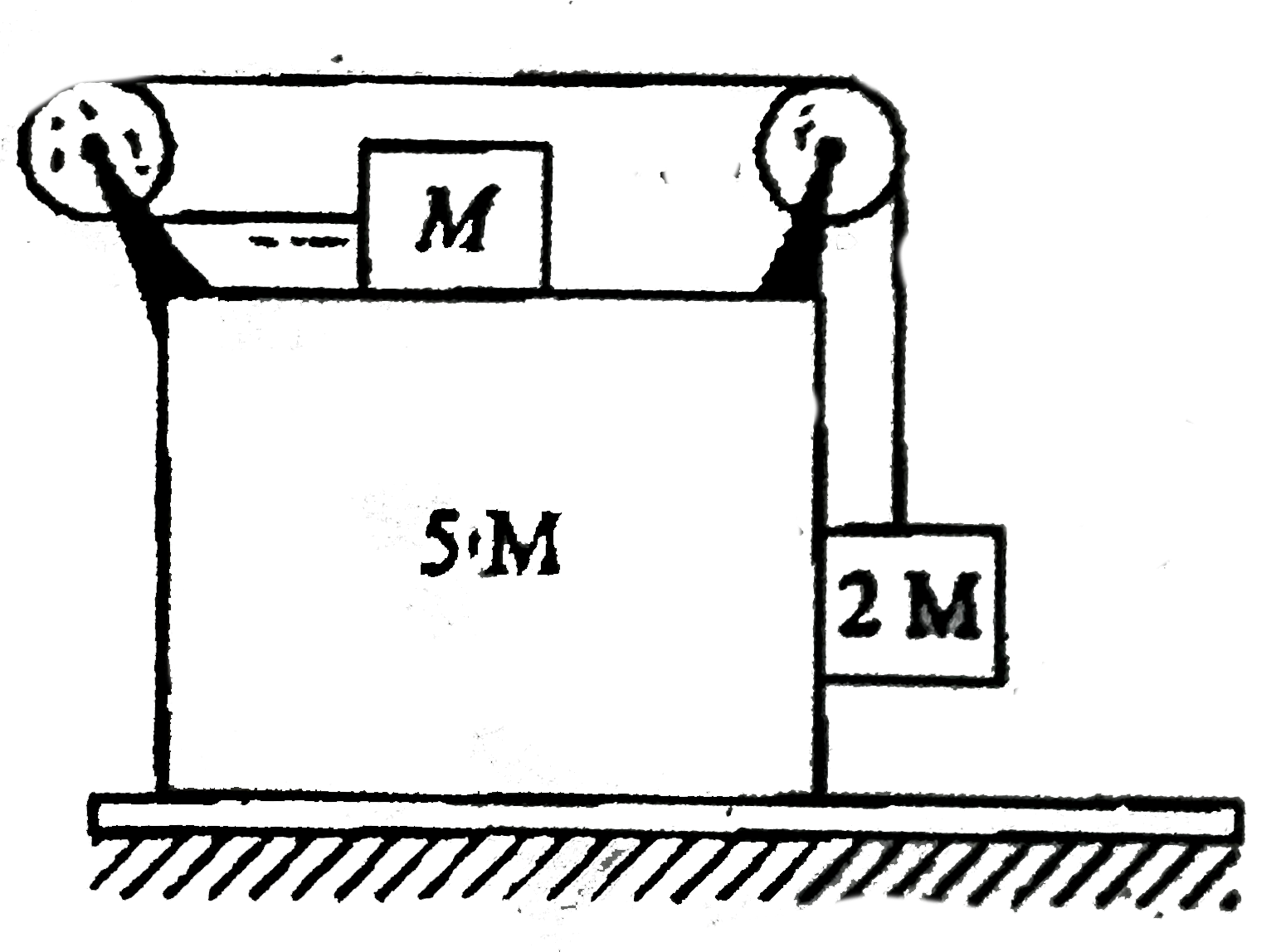 AZeroB2g/23C3g/23DNone
AZeroB2g/23C3g/23DNoneIn the system shown, the initial acceleration of the wedge of mass 5M is (there is no friction anywhere)
 AzeroBg/2Cg/3Dg/4
AzeroBg/2Cg/3Dg/4In fig. mass m is being pulled on the incline of a wedge of mass M. All the surfaces are smooth. Find the acceleration of the wedge.
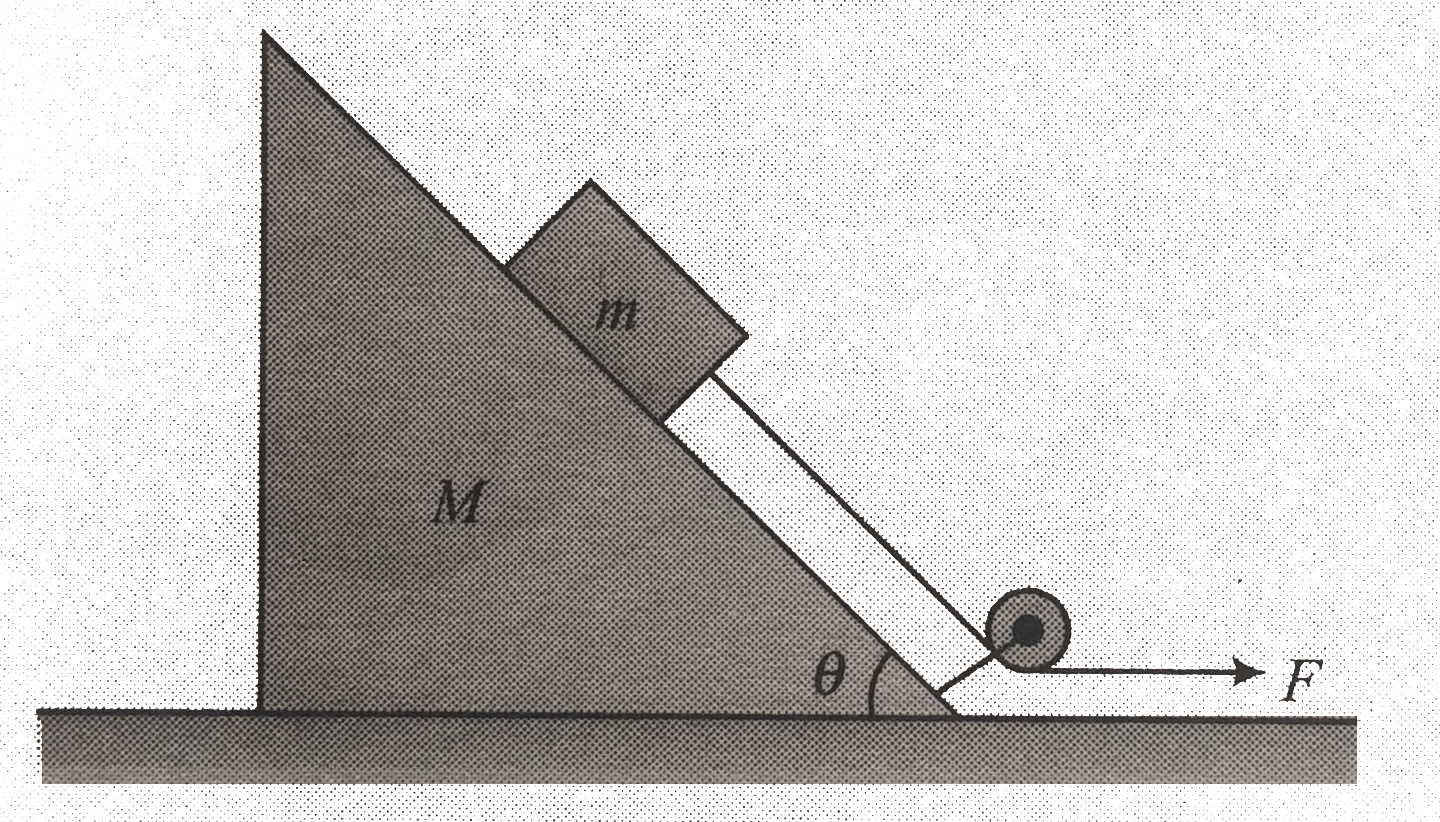 Aa=F(1−cosθ)mg2sinθcosθM+2msin2θBa=F(1+cosθ)+mgsinθcosθM+msin2θCa=F(1−cosθ)−mgsinθcosθM+msin2θDa=F(1+cosθ)−mgsinθcosθM−msin2θ
Aa=F(1−cosθ)mg2sinθcosθM+2msin2θBa=F(1+cosθ)+mgsinθcosθM+msin2θCa=F(1−cosθ)−mgsinθcosθM+msin2θDa=F(1+cosθ)−mgsinθcosθM−msin2θ
In the Fig. shown, mass 'm' is being pulled on the incline of a wedge of mass M. All the surface are smooth. Find the acceleration of the wedge.
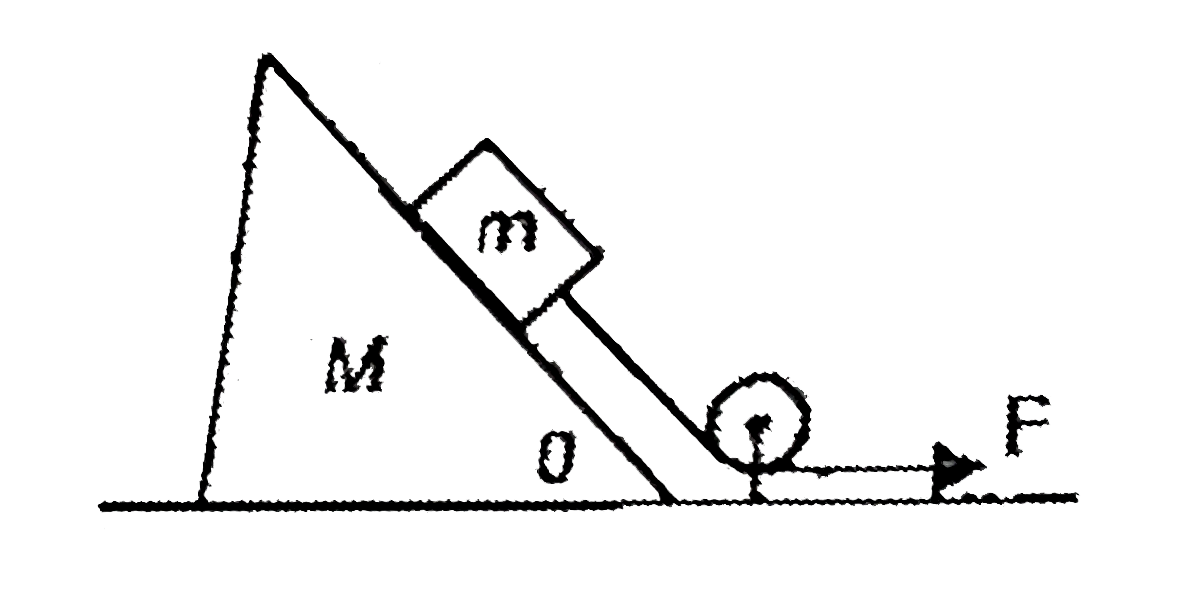
View SolutionFigure-2.54 shows a block of mass m is placed on an inclined wedge of mass M If the system is released from rest find the acceleration of m and M.

View SolutionA block A of mass M rests on a wedge B of mass 2M and inclination θ. There is sufficient friction between A and B so that A does not slip on B. If there is no friction between B and ground, the compression in spring is
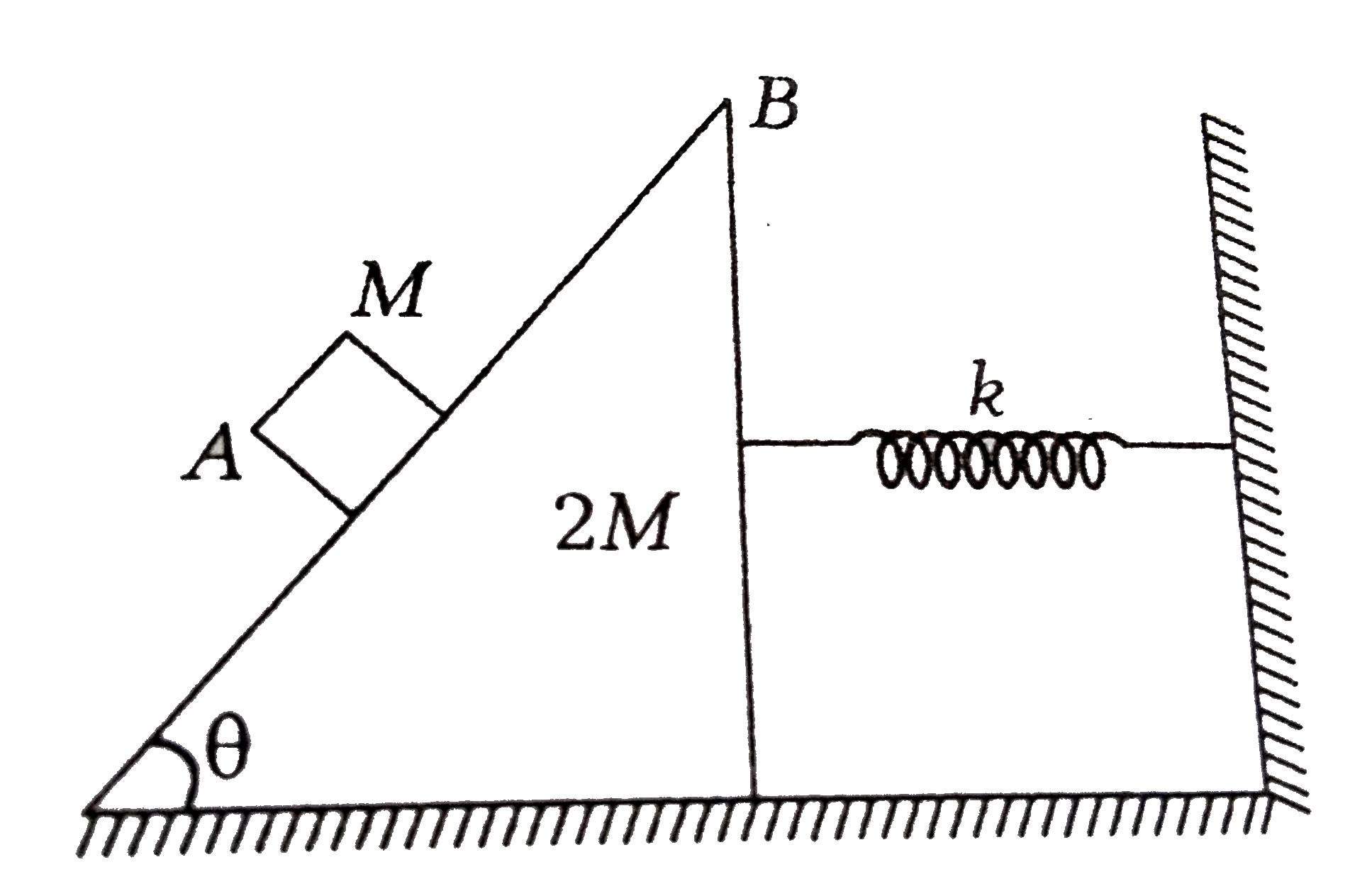
View SolutionA block A of mass M rests on a wedge B of mass 2M and inclination θ. There is sufficient friction between A and B so that A does not slip on B. If there is no friction between B and ground, the compression in spring is

View SolutionIn the system shown block is released from rest on the inclined surface of the wedge. The acceleration of the wedge will be (assume friction to be absent)

View Solution
